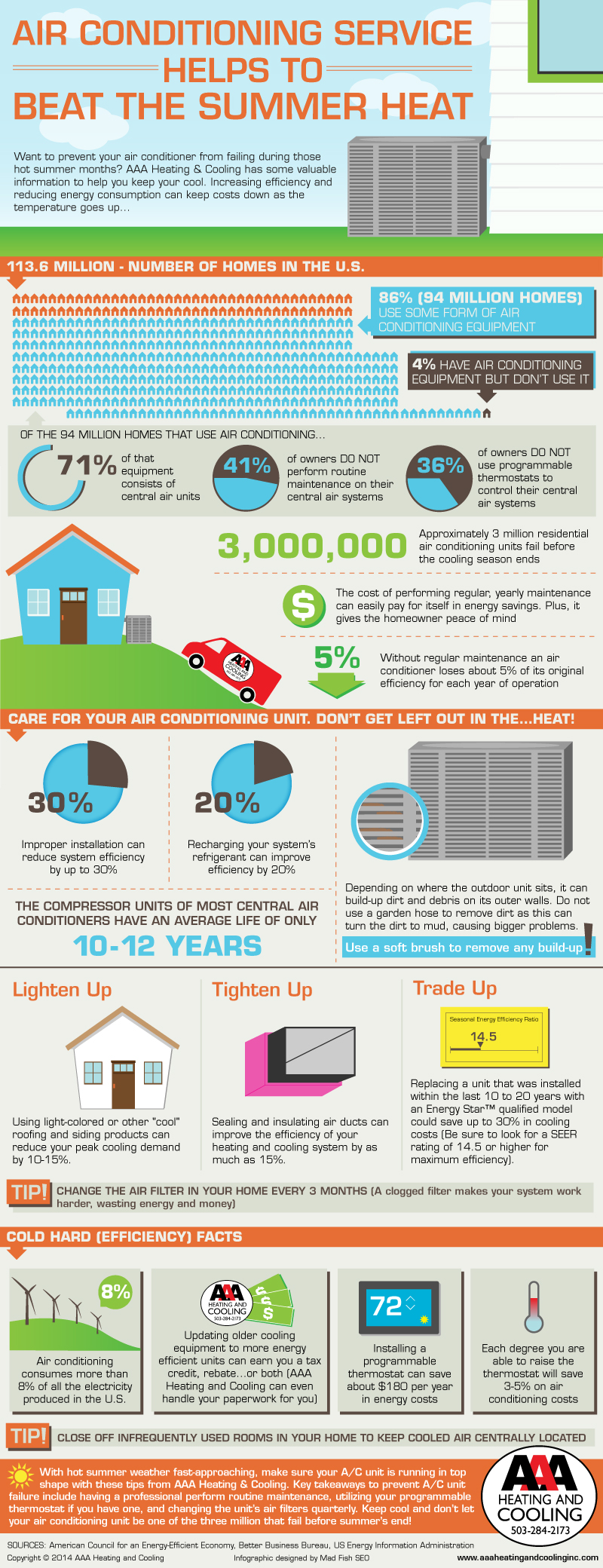The Ultimate Overview To Comprehending Heat Pumps - Exactly How Do They Function?
The Ultimate Overview To Comprehending Heat Pumps - Exactly How Do They Function?
Blog Article
Authored By-Forrest Dickson
The best heat pumps can save you substantial amounts of money on power costs. They can additionally help in reducing greenhouse gas exhausts, especially if you utilize electricity instead of fossil fuels like propane and home heating oil or electric-resistance furnaces.
air conditioning service do. This makes them a viable alternative to traditional electrical home heating unit.
How simply click the up coming webpage down homes in the summer and, with a little assistance from electrical energy or gas, they give some of your home's home heating in the winter. They're an excellent choice for individuals who wish to lower their use nonrenewable fuel sources but aren't all set to replace their existing furnace and cooling system.
They rely on the physical truth that even in air that appears too cool, there's still energy present: warm air is constantly relocating, and it wishes to move into cooler, lower-pressure atmospheres like your home.
A lot of ENERGY celebrity certified heatpump operate at near their heating or cooling ability throughout a lot of the year, minimizing on/off biking and saving energy. For the best efficiency, focus on systems with a high SEER and HSPF score.
The Compressor
The heart of the heatpump is the compressor, which is also referred to as an air compressor. This mechanical streaming tool makes use of possible energy from power creation to raise the stress of a gas by minimizing its quantity. It is different from a pump because it only works on gases and can't collaborate with fluids, as pumps do.
Climatic air gets in the compressor with an inlet valve. It travels around vane-mounted arms with self-adjusting length that divide the interior of the compressor, creating numerous cavities of varying dimension. The rotor's spin forces these tooth cavities to move in and out of phase with each other, pressing the air.
The compressor pulls in the low-temperature, high-pressure cooling agent vapor from the evaporator and compresses it right into the hot, pressurized state of a gas. This process is repeated as needed to provide home heating or air conditioning as called for. The compressor likewise contains a desuperheater coil that recycles the waste heat and adds superheat to the cooling agent, transforming it from its fluid to vapor state.
The Evaporator
The evaporator in heatpump does the exact same point as it does in refrigerators and ac unit, altering fluid refrigerant right into an aeriform vapor that gets rid of heat from the space. Heat pump systems would certainly not function without this crucial piece of equipment.
This part of the system lies inside your home or building in an interior air trainer, which can be either a ducted or ductless device. It contains an evaporator coil and the compressor that compresses the low-pressure vapor from the evaporator to high pressure gas.
Heatpump absorb ambient heat from the air, and then make use of electrical power to move that heat to a home or organization in heating mode. That makes them a great deal extra power reliable than electrical heating systems or heating systems, and because they're using tidy electrical power from the grid (and not melting fuel), they likewise generate much less discharges. That's why heat pumps are such great environmental choices. (In addition to a substantial reason they're becoming so popular.).
The Thermostat.
Heat pumps are wonderful choices for homes in cool environments, and you can use them in mix with typical duct-based systems or even go ductless. They're a wonderful different to fossil fuel heater or standard electrical furnaces, and they're a lot more sustainable than oil, gas or nuclear cooling and heating tools.
Your thermostat is one of the most essential part of your heat pump system, and it functions very differently than a traditional thermostat. All mechanical thermostats (all non-electronic ones) job by using materials that transform dimension with boosting temperature, like curled bimetallic strips or the expanding wax in a car radiator shutoff.
These strips consist of 2 various sorts of metal, and they're bolted with each other to create a bridge that completes an electric circuit linked to your a/c system. As the strip gets warmer, one side of the bridge increases faster than the other, which creates it to flex and indicate that the heater is needed. When the heat pump is in home heating setting, the turning around shutoff turns around the circulation of cooling agent, so that the outside coil currently functions as an evaporator and the interior cyndrical tube becomes a condenser.